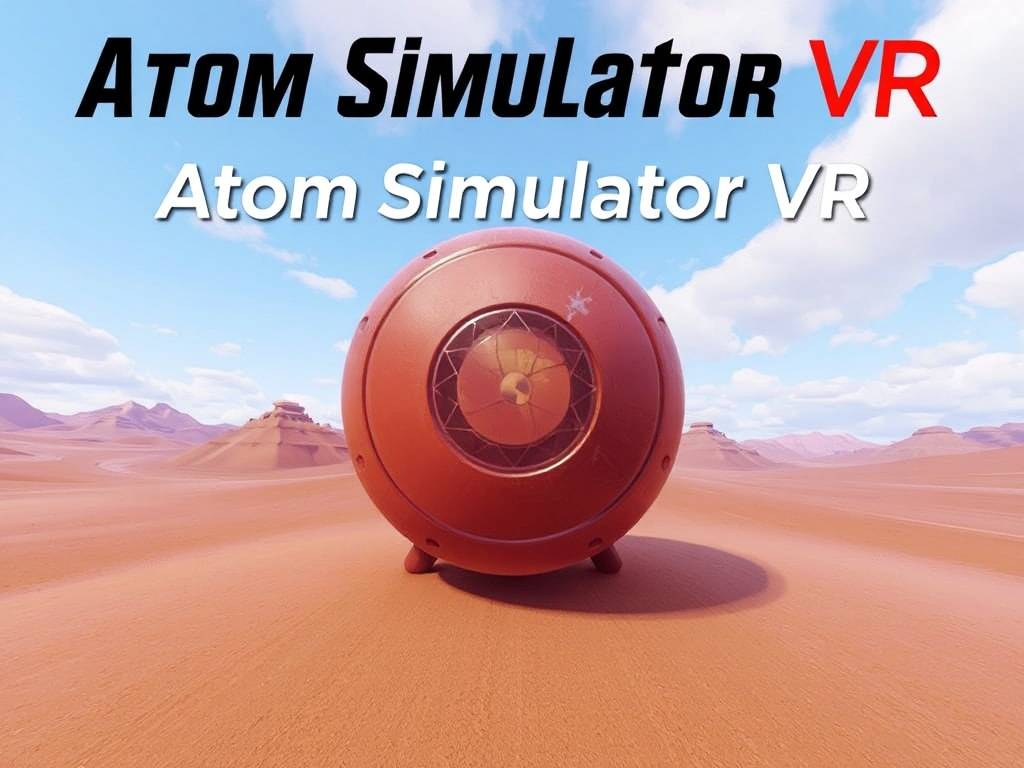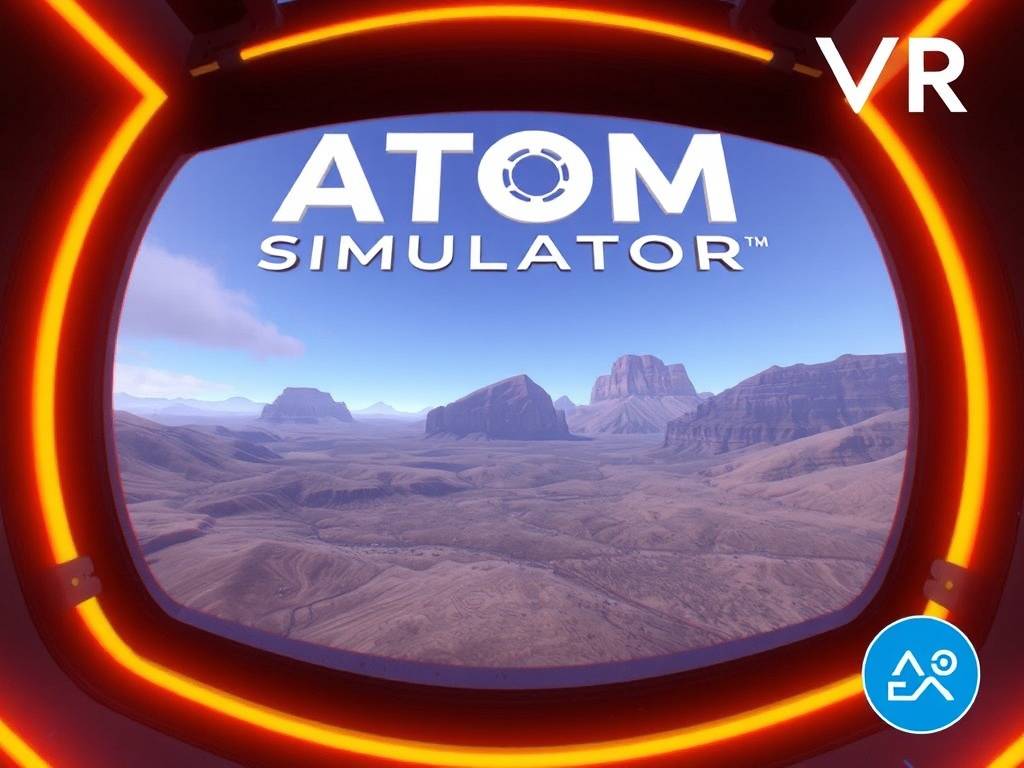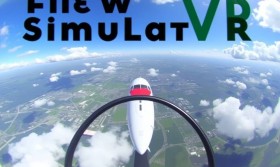Atom Simulator VR: Reaction Missions DLC – Where Virtual Chemistry Becomes an Epic Adventure

The sterile, methodical world of scientific simulation has long been a realm of precision and prediction, a digital space where variables are controlled and outcomes are, ideally, expected. Atom Simulator VR carved its niche by masterfully translating this complex domain into an immersive virtual reality experience, allowing users to don a headset and become a molecular architect, building atoms and molecules from the ground up. It was a brilliant tool for education and visualization. But with its latest expansion, the Reaction Missions DLC, the developers have done something far more audacious. They haven't just added new elements or reactions; they have fundamentally reframed the experience. They have transformed the quiet laboratory into a dynamic, high-stakes playground where chemistry is no longer just a subject to be studied, but a language to be spoken in order to save the world, solve mysteries, and embark on genuine adventures.
This DLC is a paradigm shift, moving the software from a "simulator" to an "experiential narrative." The core premise is ingeniously simple yet opens up a universe of possibilities. Instead of freely experimenting in an open sandbox, players are now presented with a series of mission briefs from a mysterious, in-game research organization. These missions range from critical environmental clean-ups and pharmaceutical synthesis under time constraints to forensic investigations and even speculative, near-future technological creations. Each mission is a puzzle, but unlike a traditional puzzle game, the solutions are not based on pre-defined logic blocks but on the fundamental, unyielding laws of chemistry.

A typical mission begins in a new, context-specific VR environment. You might find yourself in a virtual lab overlooking a digitally polluted cityscape, with a briefing panel explaining that a toxic compound, Xenon Tetroxide, is leaking into the atmosphere. Your goal: synthesize a neutralizing agent. The sandbox of base elements is still at your fingertips, but now there is a pressing objective. You must recall or discover that a safe, stable compound like Calcium Hydroxide could be effective. The process of building the calcium atom, bonding it with oxygen and hydrogen, and then virtually "dispensing" it to see the pollution indicators on your screen drop from red to green is profoundly satisfying. It’s the difference between reading about environmental science in a textbook and feeling the tangible impact of your knowledge.
Other missions delve into life-saving scenarios. One particularly gripping mission tasks you with synthesizing Aspirin (acetylsalicylic acid) to stabilize a patient's vital signs in a virtual med-bay. The pressure is palpable. You must correctly assemble the complex benzene ring structure, attach the carboxyl and ester functional groups, and avoid creating a toxic byproduct. The game’s visual and auditory feedback—the humming of stable bonds, the warning glow of unstable configurations—becomes your guide under pressure. This application of organic chemistry transcends rote memorization; it becomes a skill-based, reactionary process.
The Pedagogical Power of "Failure"
What makes the Reaction Missions DLC exceptionally clever is its embrace of "failure" as a learning tool. In the original sandbox, an incorrect bond might simply result in a molecule collapsing. In a Reaction Mission, the consequences are contextual and often dramatic. Attempting to create a fuel catalyst with the wrong transition metal might result in a small, virtual explosion that forces you to reset the mission. Trying to neutralize an acid with another acid will not only fail the objective but will provide specific feedback from the mission controller: "Compound pH has decreased. Re-evaluate your base selection." This trial-and-error process, framed within a narrative consequence, solidifies understanding in a way that passive learning never could. You don’t just learn that a reaction fails; you learn why it fails in a scenario that mimics real-world stakes.
New Features and Depth
Beyond the missions themselves, the DLC introduces several key features that enrich the entire Atom Simulator VR ecosystem.
- The Mission Log and Database: A new in-game interface acts as a digital textbook that grows with your progress. Each completed mission unlocks detailed entries about the compounds you created and their real-world applications. It seamlessly blends the gameplay with educational content.
- Advanced Reaction Mechanics: The DLC introduces more complex reaction conditions, such as requiring specific temperature thresholds or catalysts to proceed. This pushes players beyond simple atomic assembly into the realm of controlling the reaction environment itself.
- Scoring and Replayability: Missions are graded on speed, efficiency, and elegance (minimizing byproducts). This adds a compelling layer of replayability for perfectionists and educators who might want to set challenges for their students.
A New Elemental Frontier
The Reaction Missions DLC for Atom Simulator VR is more than just additional content; it is a visionary step forward for educational technology and immersive gaming. It successfully answers the question that has plagued science education for decades: "When will I ever use this?" By placing core chemical principles at the heart of engaging, narrative-driven problems, it makes knowledge feel vital and powerful.
It demonstrates that the true potential of VR lies not just in replicating reality, but in creating impossible, perfect, and safe environments where the theoretical can be practiced with tangible, thrilling consequences. This DLC is a must-experience for educators seeking to ignite a passion for science, for students struggling to connect with abstract concepts, and for gamers looking for a truly cerebral and unique puzzle experience. It proves that the periodic table is not just a chart on a wall, but a toolkit for adventure, waiting for the right person to step into the virtual lab and begin their mission.


















